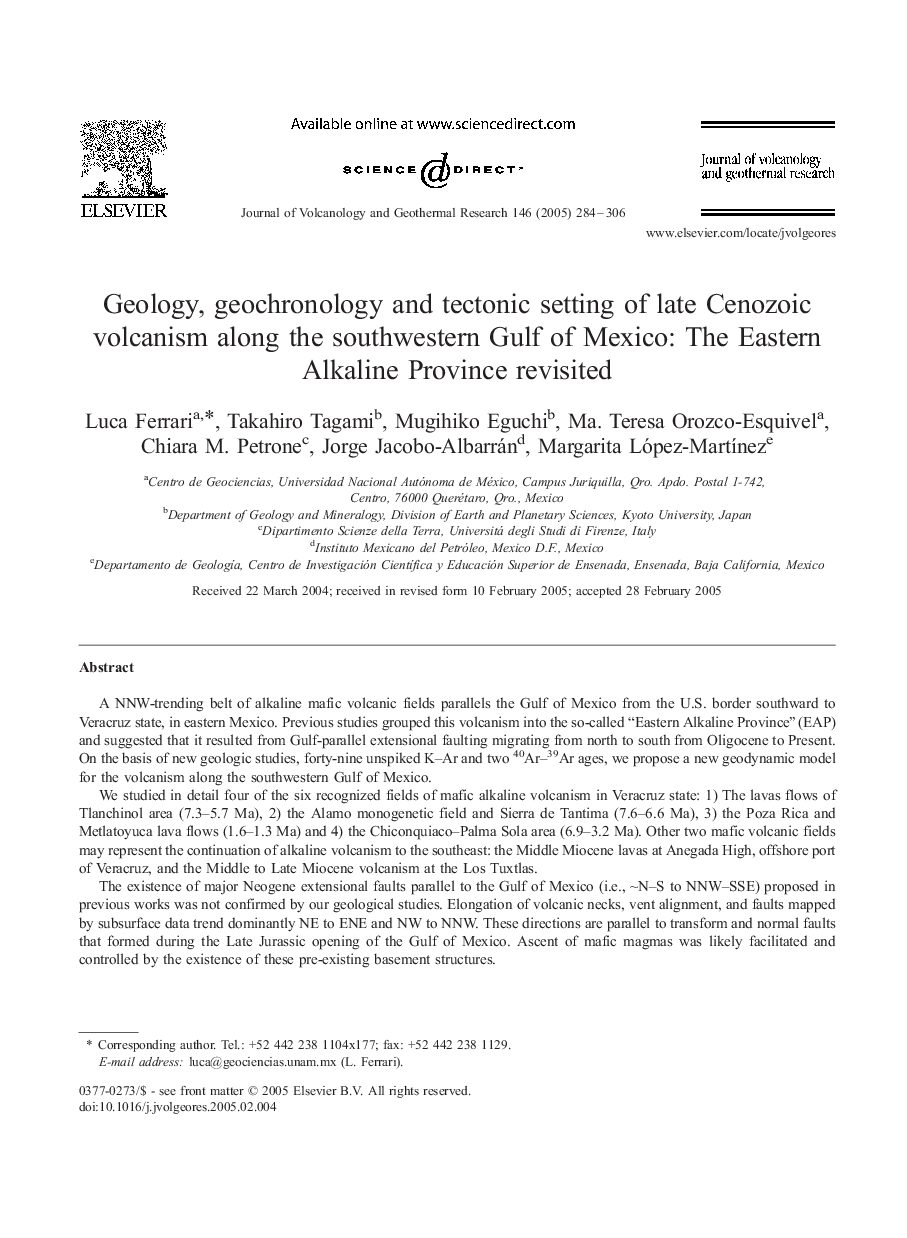| Article ID | Journal | Published Year | Pages | File Type |
|---|---|---|---|---|
| 9530972 | Journal of Volcanology and Geothermal Research | 2005 | 23 Pages |
Abstract
Coupled with previous studies, our data demonstrate the occurrence of three magmatic episodes in Veracruz: 1) A Middle Miocene (â¼15-11 Ma) episode in southern Veracruz (Palma Sola, Anegada, and Los Tuxtlas); 2) A Late Miocene to Early Pliocene (â¼7.5-3 Ma) pulse of mafic alkaline volcanism throughout the study region; and 3) A Late Pliocene to Quaternary transitional to calc-alkaline volcanism in southern Veracruz (Palma Sola, Los Tuxtlas). Whereas the first and third episodes may be considered part of the subduction-related Trans-Mexican Volcanic Belt, the second pulse of mafic alkaline volcanism has a more complex origin. The absence of significant extensional faulting precludes a rift origin. We favor a model in which a transient thermal anomaly and melting of the mantle was triggered by the tearing and detachment of part of the subducted slab.
Related Topics
Physical Sciences and Engineering
Earth and Planetary Sciences
Geochemistry and Petrology
Authors
Luca Ferrari, Takahiro Tagami, Mugihiko Eguchi, Ma. Teresa Orozco-Esquivel, Chiara M. Petrone, Jorge Jacobo-Albarrán, Margarita López-MartÃnez,
